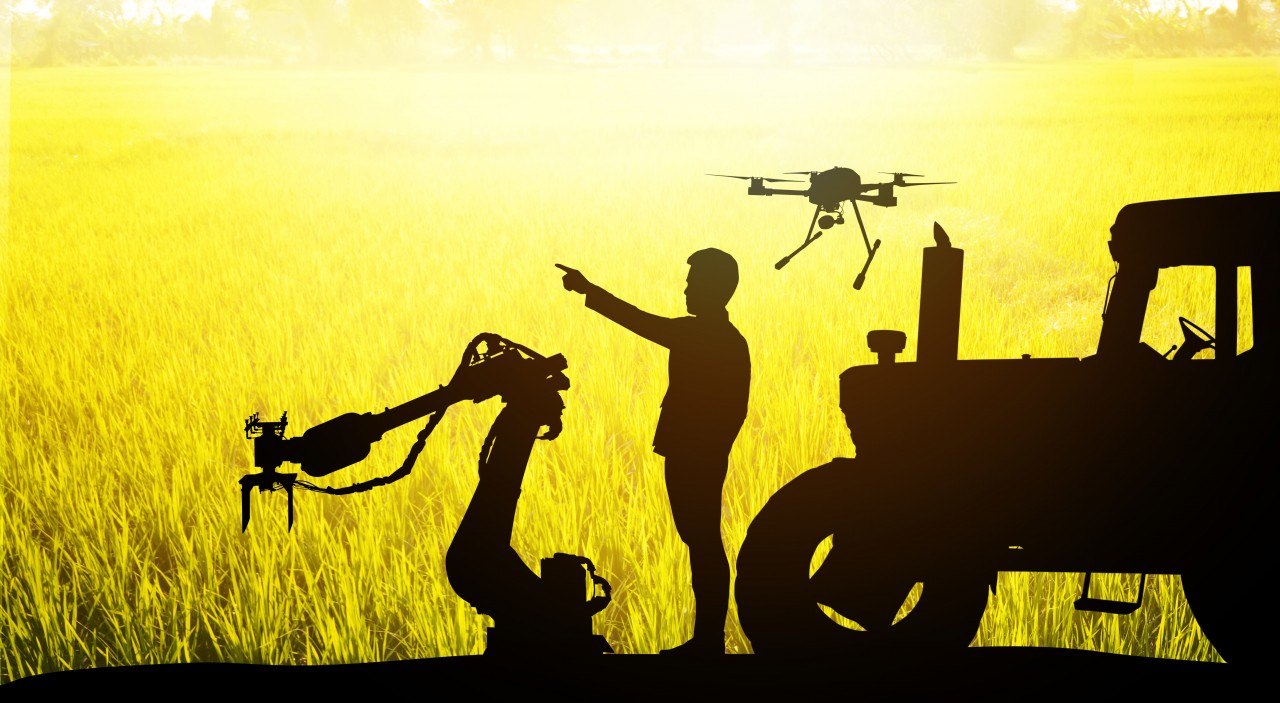Climate Resilience: A Defining Priority for COP30
Climate resilience. We expect this to be a major topic at COP30. Resilience has many…
Digital agriculture is emerging as one of the most exciting new innovation spaces in the food and agriculture sector. From AI-supported decision-making, imagery services to precision agriculture machinery, robotics and mobile services, there is a high level of interest from consumers, investors and policy-makers in the potential of this new approach to help deliver a sustainable, efficient and secure food supply.
 Examples of such innovations include precision agriculture approaches, in which cutting-edge methods of data aggregation, analysis, and machine learning are applied to farming practices to more accurately assess and manage environmental conditions, input usage, and farmer interventions. Satellite guidance of automated farm machinery can reduce redundant movements and save fuel. Accurate field mapping and surveying can ensure that seeds are ideally spaced, and water, pesticides, and fertilizers are applied when and where they are most needed.
Examples of such innovations include precision agriculture approaches, in which cutting-edge methods of data aggregation, analysis, and machine learning are applied to farming practices to more accurately assess and manage environmental conditions, input usage, and farmer interventions. Satellite guidance of automated farm machinery can reduce redundant movements and save fuel. Accurate field mapping and surveying can ensure that seeds are ideally spaced, and water, pesticides, and fertilizers are applied when and where they are most needed.
Advances in robotics provide new ways for these analyses to be operationalized. Current research into automated workflows, advanced image processing, and new mobility and grip designs have made it possible for machines to take on ever more of the painstaking and often back-breaking labor required for a successful crop. Specialized and self-directed machines are being developed for a wide range of applications, including precision pest control, soil analysis, plant-trimming, and the harvesting of soft fruits and vegetables.
Digital agriculture can help make farmers’ lives physically safer and easier in other ways. For example, through automated mixing systems for plant protection products. These systems mix the correct volumes of plant protection product and water, thereby obviating the need for farm workers to agitate tanks and mix and measure their content themselves. This prevents operators from having to handle the plant protection products directly, thereby minimizing their exposure to potentially harmful chemicals.
According to the Report by CTA on the “Digitalization of African Agriculture”, digital ag solutions have already registered over 33 million smallholder farmers and pastoralists across Africa (13% of all Sub-Saharan African smallholders and pastoralists and up to 45% of smallholder households, depending on assumptions used to calculate penetration). The sector has been growing at about 44% per annum over the last three years in terms of the number of farmers reached (i.e., registered for solutions). A small minority of companies (about 15, most of which focus on advisory services as their current primary focus) have begun to reach notable scale with 1 million plus registered farmers each.
 In spite of the substantial benefits and positive interest in this field, there are also several policy and regulatory issues that companies will need to address to ensure they are able to grow and maintain their license to operate. These issues include privacy and data use policies, intellectual property, technology transfer, and public perceptions of benefits.
In spite of the substantial benefits and positive interest in this field, there are also several policy and regulatory issues that companies will need to address to ensure they are able to grow and maintain their license to operate. These issues include privacy and data use policies, intellectual property, technology transfer, and public perceptions of benefits.
Digital agriculture companies remain under-represented in policy forums and public discussions. The digital agriculture sector will need to be much more collaborative in its outreach and advocacy efforts, if it is to fulfill its potential for reducing hunger while helping to preserve the planet. Digital agriculture has that opportunity to be seen as the solution, but it will need to act quickly and concertedly to make full use of its potential as a sector.
Emerging is currently working with key actors in the sector to look for solutions for increased collaboration and coordination on pre-competitive issues; where outreach, partnerships, and advocacy can help create, maintain and grow a supportive policy environment for the sector.
Digital Technologies in Agriculture and Rural Areas, FAO 2019
Digitalization of African Agriculture, CTA 2019